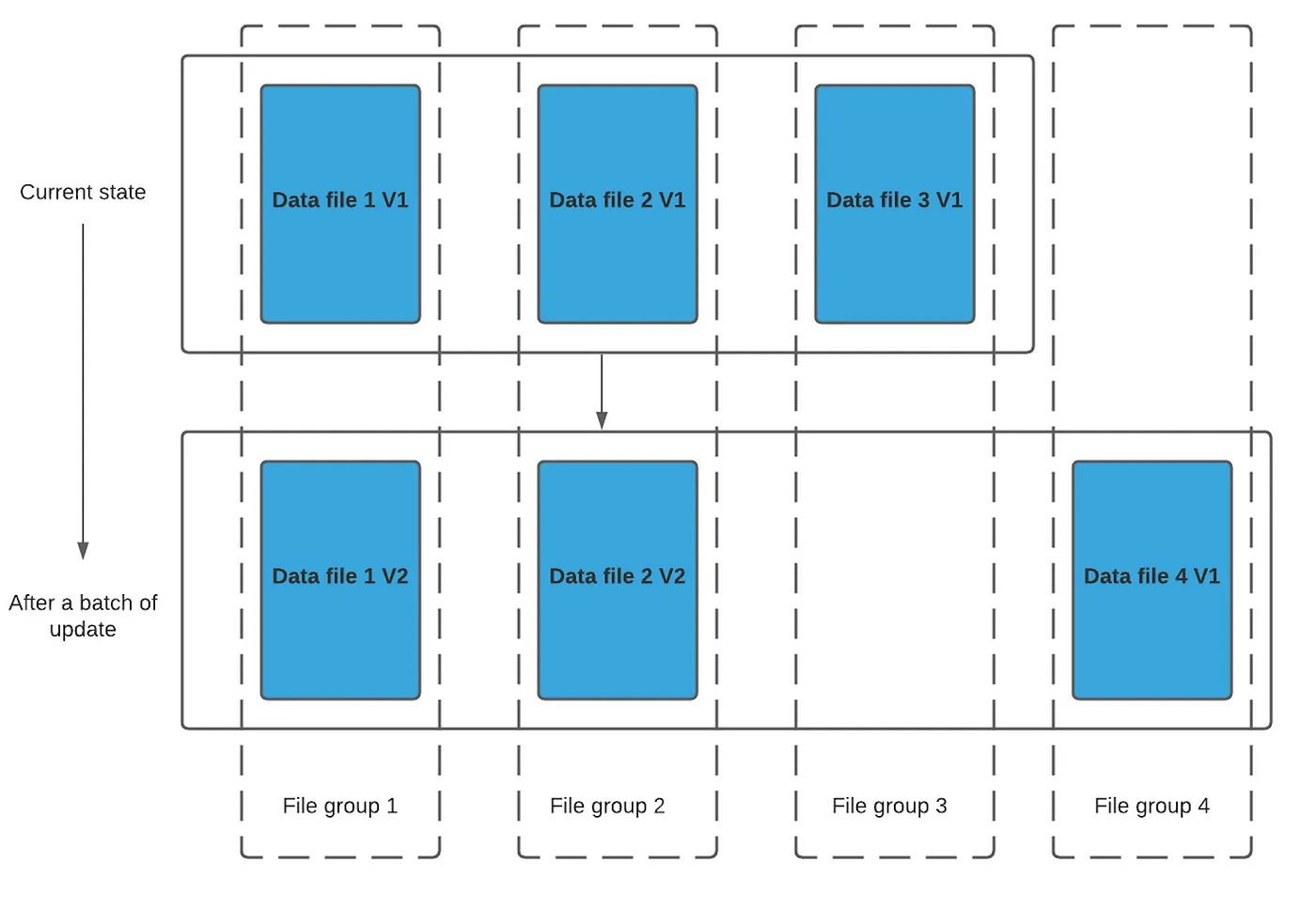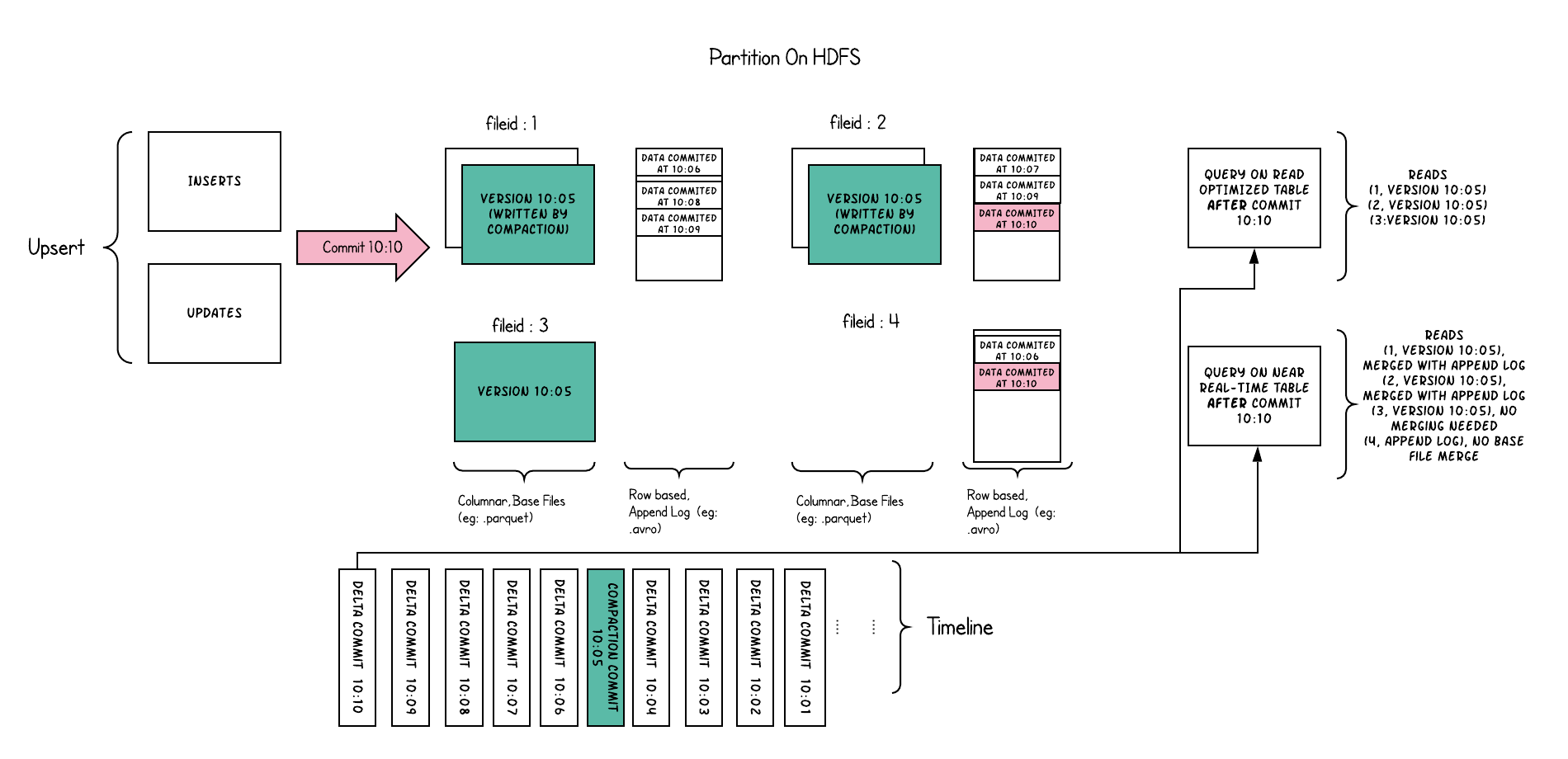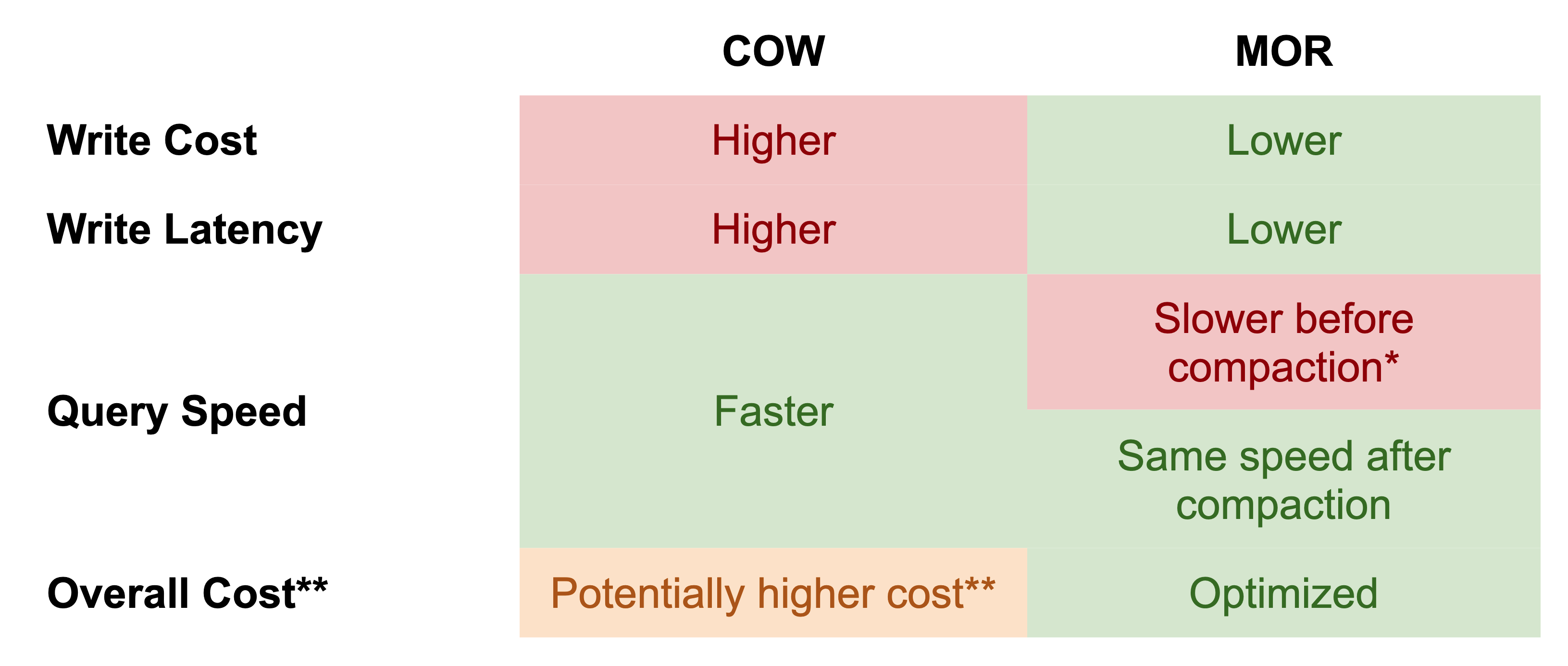In Apache Hudi, COW (Copy-On-Write) and MOR (Merge-On-Read) are two different storage types that determine how data is managed and accessed. Here’s a breakdown of each:
Copy-On-Write (COW)

- Definition: In COW, whenever an update or delete operation occurs, a new version of the data is created. The original data remains unchanged until the new data is fully written.
- Use Case: Best suited for workloads where read performance is critical, and updates are less frequent. It’s optimal for batch processing and scenarios where data consistency is paramount.
- Performance: Provides faster read operations since data is stored in a format optimized for reading. However, writes may be slower due to the overhead of creating new files.
Merge On Read (MOR)?
MOR is one of the storage types offered by Hudi. Here’s how it works:

- Data Layout: In MOR, data is stored in a combination of small columnar files (for efficient querying) and larger log files (for fast writes).
- Reading: When you read data, Hudi first retrieves the data from the columnar files and then merges it with any updates from the log files on-the-fly.
- Benefits:
- Efficient Writes: You can append data quickly.
- Faster Querying: Optimized for reading without needing to rewrite large datasets frequently.
Comparission
